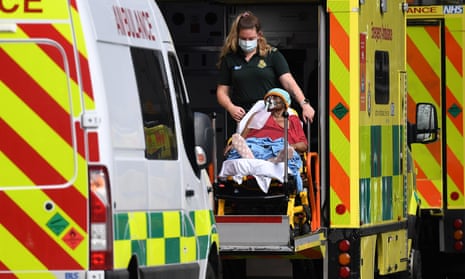This is a public service announcement: if you are one of the 5.6 million people in the West Midlands on 17 August, don’t have a heart attack or a stroke. The chances are that no one will arrive in an ambulance to help you. Unbelievable as it might sound, this warning was delivered last month to those served by the region’s NHS ambulance service. It’s not a one-off. The BBC reported on the case of Kenneth Shadbolt, 94, who waited more than five hours after a bad fall – an accident that proved fatal. The scandal is compounded by the deaths of patients in ambulances that have been kept waiting outside NHS hospital emergency departments.
Sajid Javid, the health secretary, last week tried to blame the collapse in the service on the pandemic. But the public isn’t buying it. More than half those interviewed in a poll the same week said record ambulance waiting times were the government’s fault. The data clearly points to a problem: the average ambulance response time for category two calls – those for serious conditions – is 40 minutes in England. This is more than double the 18-minute target. One in 10 is kept waiting almost an hour and a half. There is a Covid-19 hangover. But there is also an increased demand from patients presenting with serious illnesses, and greater numbers of people calling an ambulance because they cannot get through to a more appropriate service such as their GP.
It is a symptom of the social care crisis – one that Boris Johnson promised to solve – that too many ambulances are left queueing up outside hospitals, unable to transfer patients to busy A&E departments. This is because hospitals are finding it increasingly difficult to discharge people who are well enough to leave because of a lack of nearby social care and home care. The NHS in England had more than 12,000 patients in hospital in April who shouldn’t be there, a rise of 20% on December’s figure. There is a corresponding rise of 30% in patients who wait an hour or more in an ambulance outside A&E. Ambulance staff become demoralised queueing outside hospitals, unable to answer other emergency calls.
The Healthcare Safety Investigation Branch watchdog has called for immediate action by Mr Javid’s department to reduce the risk of patient harm from delayed ambulance handovers. This storm has been brewing for a decade. Austerity has shrunk hospitals so much that they lack the space to accommodate urgent admissions. Care services are too shrivelled to help. The upshot is patients waiting in pain for record lengths of time in A&E after they have waited too long for ambulances to reach them.
Ambulance services are the canary in the coalmine. More than 6 million people – roughly one in nine – are waiting for NHS procedures. By 2024, when the next election is due, that number could be 14 million people, or one in five. An NHS crisis will damage the Conservatives. Mr Javid needs a plan, rather than excuses, to address patient safety issues arising from flow through and out of hospitals to the right place of care. This means coming up with solutions – and convincing the Treasury that more cash is needed – to deal with this emergency.
